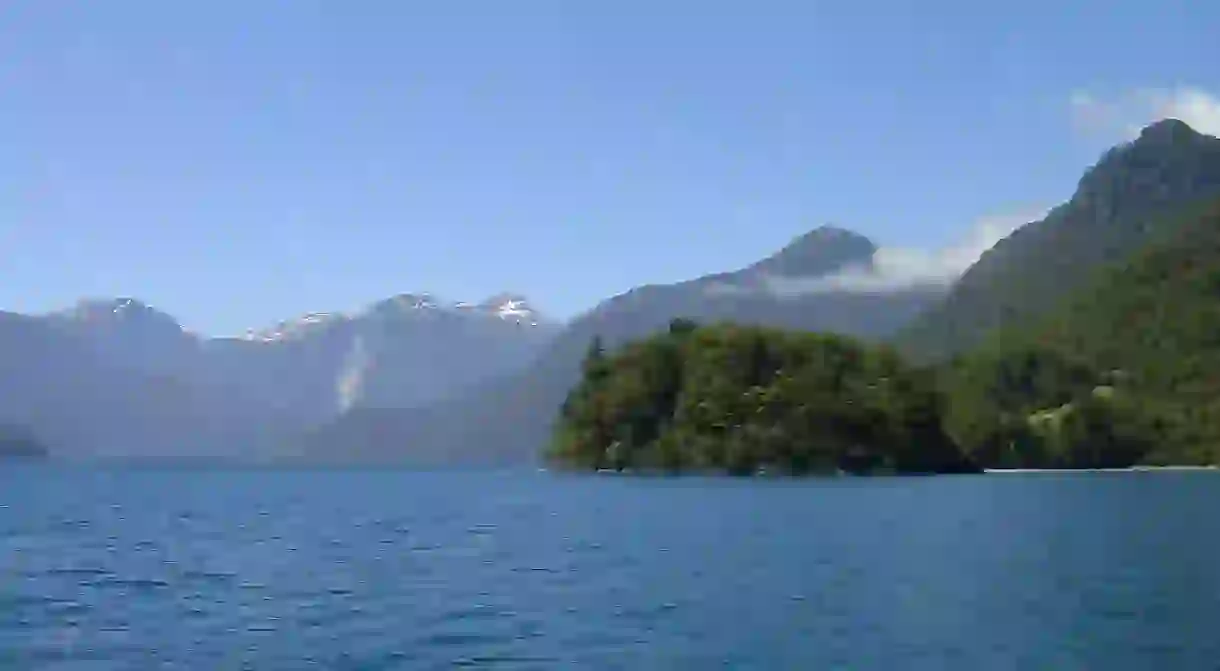Cruce de Lagos: What You Need to Know About the Lake Crossing

The Cruce de Lagos is one of the most stunning natural thresholds on earth. Straddling Chile and Argentina, this incredible lake crossing links the Argentine mountain and ski town of Bariloche with the small Chilean settlement of Puerto Varas. Here’s everything you need to know about the Cruce de Lagos.
Situated in northern Patagonia, Bariloche is famed for its skiing in the winter and its incredible views of the lakes in summer. Bariloche is close to the Chilean border, and this affords it the possibility of crossing over into neighbouring territory, but not by air or by land, but by lake. This amazing journey is known as the Cruce de Lagos, the lakes crossing, or the Cruce Andino, the Andean crossing, and it brings you through three jaw-droppingly scenic lakes (and okay, there is some driving between lakes, but it’s still beautiful!) from one side of Patagonia to the other.

The crossing can be done in as quickly as one day or as many as three, depending on what tour you do, whether you want to do a return journey, and whether or not you decide to stay the night at any of the spots along the way, so make sure you decide where you want to stay and the duration of your trip before you go. Boats leave from the nearby town of Puerto Pañuelo, 25 km from Bariloche, so make sure you have the correct transport to get you there on time. If you plan on doing the crossing, take at least two days, as each crossing (there and back) takes around 11 hours – thus to be able to fully enjoy the breathtaking Patagonian landscapes, two days is necessary.
Setting off from Bariloche early at 7 or 8am, you will get the boat from Puerto Pañuelo across Nahuel Huapi Lake towards Puerto Brest, the first stop on the way to Chile. Marvel at the expansive and humbling mountains surrounding the lake, and appreciate the different perspective from the boat. In Puerto Brest, board a bus to take you to the next stop, Puerto Alegre, where you will once again board the boat to cross the next wonderful lake, Lago Frias. Take in the epic reflections of the snow-capped, forest-covered mountains that rim the lake in the still water. On the way you will see the imposing peaks of the Cerro Tronador before stopping in Puerto Frias to cross into Chile. This is a national border, so remember to bring your passport, and have checked for any visa requirements before doing the crossing.

A bus will take you towards the town of Puella. This drive is unparalleled in terms of the monumental Andean scenery you will see along the way. Driving through the Andes is something that everyone should experience at least once in their lifetime. Once in Puella, you can take a look around, partake in some of the fun outdoor activities they have on offer, such as horseback riding or zip-lining, and decide to spend the night if time allows. The next stop, whenever you decide to leave Puella, is Petrohué, which is reached by sailing across Lago Todos los Santos in Vicente Pérez Rosales National Park, and if the day is clear, you will be afforded views of two famous Chilean volcanoes, the Osorno volcano and the Puntiagudo volcano. The former is of particular interest, its perpetually snow-capped peak being an almost cartoonish representation of a volcano, so true to its form as it is. Land and check out the Saltos del Petrohué, a set of waterfalls that tumble into a bright turquoise pool, coloured so because of its volcanic basin.

The last crossing is of Lago Llanquihue, a pristine blue lake that stretches as far as the eye can see and to the base of the volcano beyond. It is truly an impressive sight and the perfect end to a trip of inimitable beauty. Once you have crossed the lake, you will land in your final destination, Puerto Varas.
The Cruce de Lagos is ideal for anyone who wants to visit both Argentine and Chilean Patagonia from the inside out, and to get a really unique perspective on the singular landscapes that can be seen in this famous part of the world. From the mountains to the forests to the rivers and, of course, the lakes themselves, no other landscape in the world has such variety and beauty, not to mention spanning two of the world’s most fascinating countries.













